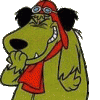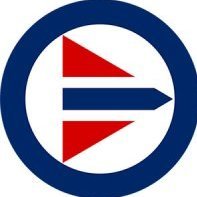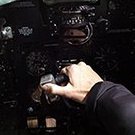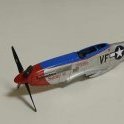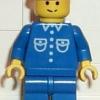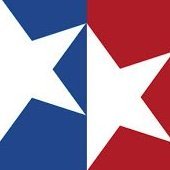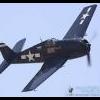Search the Community
Showing results for tags 'P-40'.
-
I recently received the Airfix 1/72 Curtiss Hawk 81-A-2 kit as a gift, but I'm not taken by the Flying Tigers example as boxed. I'd prefer to go for this scheme on Xtradecal sheet X72139, showing a P-40 of 55 Pursuit Squadron, 20 Pursuit Group, based in California in 1940:- The artwork for this aircraft is labelled as a "P-40" rather than a "P-40B" as all the other schemes on the sheet are. Furthermore the artwork shows long-barrelled guns protruding from the top of the engine cover, so I'm thinking that this is an early production Model 81. I'm no P-40 expert, but from what I've read it seems that early Model 81's might have either one or two guns in the wing? And then I'm not sure if they would be long or short barrelled... To summarise:- (1) Long barrelled guns above the engine? (2) How many guns in each wing? Long-barrelled or short barrelled? The Xtradecal sheet references the Monogram book USAC/USAAF C&M Vol.1, p139, so I assume there is a photo of this machine there. Unfortunately I don't have a copy! If anyone could shed any light on these questions I would be very grateful. I'll admit I'm hoping for long-barrels so I can build something that looks a bit different to the more familiar P-40B! Regards, Dave
-
Greetings. The model was assembled several years ago. The old kit from Special Hobby was not easy to assemble, the contents of the cockpit are not true, empty landing gear niches, empty air ducts that are saturated in the P-40, and so on. Some castings are unsuitable in detail. I couldn’t find any third-party add-ons for the set from Special Hobby. Therefore, the modification work was not easy - in addition to significant modifications of my own, I used a lot of etched and resin products for other sets that had to be adapted for Special Hobby. Acrylic painting. Bottom surfaces are Tamiya Neutral Gray. The upper surfaces were first painted with “Olive drab” from Gunze, and on top of it – “Tan” from the same Gunze, after which “shabbyness” was done to the bottom color using “Worn effects” liquid from AK. *Sorry for the automatic translation
- 12 replies
-
- 51
-

-
- p-40
- Special Hobby
-
(and 1 more)
Tagged with:
-
Here is my RAF Tomahawk. I have always been fascinated by the RAF dessert Tomahawks, but only now well into my fourties I managed to build one myself. I used the Airfix kit and did a little detailing and riveting. Painted with Hataka acrylics and trying to make it look weathered and dusty. I hope you like the pics. Happy modelling 🙂 /T
-
This is the well-loved Airfix Hawk 81-A-2 of the AVG in China, around 1941. Built mostly OOB with the addition of Infini Model Aero Rigging 0.055 mm for the radio antennas. Only fit issue was a large gap (around 2mm) along one of the wing roots. Otherwise, the kit has nice and delicate recessed details and is sharply molded. Mr Color and Tamiya paints; AK enamel wash, Abteilung 502 and Mig Oilbrushers oils, and Tamiya pigments for weathering. I wanted this thing to look really beat up, so I took the plunge and tried my hand at weathering the decals, coming at them with all manner of sharp implements. Likely overdone, but it was a fun learning experience. Thanks for looking!
-
I purchased an Airwaves photo-etch set that had the wrong instructions. Would anyone in this community be able to provide me with the instructions for: Airwaves AC72-201 ARADO AR-196A ? I have instructions for: AC72-162 Sea Venom Interior if anyone might need it.
- 2 replies
-
- P-40
- Canadian WWII
-
(and 1 more)
Tagged with:
-
Forgive the photos, I decided on an RFI during a burst of unjustified self-confidence. The camera sees what the eye occludes, and I'm much less happy with it than I was before I studied the photos. Additionally, my Pixel 7's camera has been incredibly disappointing, possibly due to a poor choice of case. And my lightbox needs replacing, and I need new lights for it besides. But those are all excuses. In any case, I opted to build a Kittyhawk shortly after the death of J F Edwards, Canada's greatest and last remaining ace from the Second World War. DK Decals has a sheet with a Kittyhawk I purportedly flown by Edwards in June of 1942 during his time on 260 Squadron, though not the aircraft he flew when on 17 June 1942 he shot down and killed the experte Otto Schulz with a deflection shot of remarkable difficulty. The Special Hobby Kittyhawk Ia kit was my base, with the only cosmetic modification to make it a Kittyhawk I being to replace the later bulged 0.50 barrels with some brass rod of the appropriate size. Paints are the excellent Colourcoats for all but the cockpit interior (a Gunze mixture), the rubber of the tires (Tamiya), and the propeller blades and tips (Gunze again). Some Eduard etch was used, principally to irritate me, I think, which probably speaks volumes about how low diplomatic relations with my own psyche have sunk. Wildly discursive build thread here:
- 31 replies
-
- 82
-

-

-
- Special Hobby
- 1/72
-
(and 1 more)
Tagged with:
-
hi,every one!!😃 this is my Hasegawa 1/48 P-40N .. this kit is aged,but quite easy to build. I use P.E set for landing flap and add some rivets to this warbird. the oliver darb color is much harder than I expact.. not perfect..but I think the result is ok... hope you like it and here is the video build if you are interested🙂
- 13 replies
-
- 53
-

-

-
“[T]he Kittyhawk Mk.I was not an easy aircraft to fly properly and, as a result, we lost a good number of pilots while training. Some Hurricane pilots just flatly refused to fly it, preferring to go back to the Hurricane squadrons. In the first few months after conversion to Kittyhawks, all the squadrons lost heavily to the 109s." -- Wing Commander J F Edwards DFC* DFM "The air war in Africa favoured the "experts" to a high degree. The wing men, "Kaczmeraks"*, and No. 2s had only a small chance to gain any victories. The majority of the victories of the German fighters were the result of surprise attacks, during which in most cases only the formation leader was able to fire. Such quick, sparrowlike attacks were seldom followed by a dogfight." -- Major Rudolph Sinner, JG27 (latterly JG54 and JG7) You say "sink or swim" what a cruel, cruel phrase I'd rather fly -- Sleater-Kinney, "The End of You" On 17 June 1942, as the British and Commonwealth forces in North Africa faced the shipwreck of their hopes, eleven Hurricane IIcs of 274 Squadron were detailed to escort Boston light bombers on a ground attack sortie. A few days before, the HARPOON convoy from Gibraltar to Malta had lost four of its six merchant ships, and two escorts: the big Tribal-class destroyer HMS Bedouin, and the smaller Hunt-class Free Polish ORP Kujawiak. VIGOROUS, from Alexandria to Malta, had failed even to arrive, being forced to turn back in an effort to avoid annihilation. The meager tonnage of supplies delivered meant that Malta could no longer function offensively: it would now be forced to serve the war effort in the Mediterranean by absorbing as much Axis firepower as possible, and the fuel remaining on the island was reserved for the defending fighters. Coterminate with these disasters, Rommel was in the process of winning his greatest victory in the desert, the Battle of Gazala. The day before the shattered remnants of HARPOON made landfall, Auchinleck ordered the Eighth Army, battered after its piecemeal attacks had lead to a comprehensive defeat in detail and the loss of almost all of its splendid new American tanks, brought at such great risk across a vast ocean, to begin a retreat that would quickly become a disastrous rout. Not for the first time in the war, but almost for the last, it fell to the Royal Air Force to buy the time the Army needed to escape, to recover, and to hopefully fight again. The Hurricanes of 274 made contact with the Bostons late and struggled to keep up with the bombers. Initially they were bounced by Macchi 202s of 10 Gruppo (who claimed four P-40s and a Hurricane, to two MC.202s for the RAF -- neither side lost any aircraft), and then by a more dangerous foe: four Bf109F-4s of Stab. II./JG27, lead by the 50-claim "experte" Oberleutnant Otto "Ein-Zwei-Drei Otto" Schulz, aged 31, a long-service Luftwaffe veteran who'd joined in 1934 and served as a flying instructor pre-war. Schulz was notable not only for his extensive experience, probably as great as any man flying fighters in the Luftwaffe in 1942, but for his habit of strafing aircraft he'd downed to make sure of his victories. Canadian Flight Lieutenant W A G "Wally" Conrad spotted the 109s coming in to the attack and attempted a climbing turn to meet them, only to realize too late that his radio was unserviceable, and his warnings to his squadronmates had gone unheeded. The four 109s ignored the remainder of 274 Squadron, which passed on along with their charges, blissfully unaware of the life-and-death struggle receding astern.** Conrad, now alone against four 109s, threw his aircraft into a series of tight descending turns, hoping to make for the deck and run for home. He was a skilled pilot with three confirmed victories, and for a time, it worked, but fifty feet off the ground, the 109s herded him in front of Schulz's guns at last, and a cannon shell entered the cockpit and exploded directly under the throttle quadrant, wounding Conrad in his left hand, wrist, and both legs. Dropping his flaps, the Canadian rode his wounded aircraft down. As he clambered out of his shattered Hurricane, Conrad looked up to see a 109F coming back towards him, firing as it went. With nowhere to run in the featureless desert, the Flight Lieutenant crouched helplessly behind his aircraft's engine, hoping the Merlin could perform one final service and absorb the worst of the incoming fire. Schulz's Messerschmitt came around for another pass. Flight Lieutenant James "Eddie" Edwards (the nickname by which he is better-known, "Stocky", was not used in the western desert) had been flying an escort mission with 260 Squadron for another group of Bostons when they were bounced by 109s of III./JG53. 260 Squadron had apparently not yet adopted the modern finger-four formation, and was still flying in line astern with a "weaver", despite their CO, "Pedro" Hanbury being a very experienced Battle of Britain veteran who ought to have known better. Edwards lost contact with the rest of the squadron in the ensuing melee, shooting down the 109 of Leutnant Wolf Schaller*** before finding himself alone and at low level, a dangerous place to be with Messerschmitts out and about on frie jagds. At this juncture, he spotted a single 109 at low level in mid-turn, with two or three circling above it. Edwards was running his Kittyhawk's engine flat-out, flying at over 300 MPH on the deck, close to if not at its maximum speed for such a low altitude. He did not see Conrad's downed Hurricane, which with its desert camouflage must have been almost invisible at that speed. Ahead, he saw the 109 coming out of the turn, and banking slightly, he opened fire at sixty degrees deflection, on the border between a three-quarters and a full deflection shot, very difficult for even experienced pilots. Edwards had flown his first operational sortie less than three months before, on 23 March 1942. The burst caught the 109 along the flank, passing from the engine back along the side of the cockpit. Wth Schulz dead or dying already, the Messerschmitt heeled over and smashed itself to pieces against the ground. Before the three circling 109s above could react, Edwards sped onwards for home unmolested. As he passed overhead, Conrad -- who would later become a squadron leader with the famous Canadian Spitfire Wing, a successful evader, and an ace in his own right-- took note of the aircraft markings of his saviour. "Pedro" Hanbury was extremely strict about victory claims, dismissing an intelligence officer whom he didn't trust, and threatening to bring up pilots on charges if he thought they were lying about shooting down enemy aircraft****. Edwards didn't file a claim for the aircraft, and it would only come to light and be confirmed in the late 1970s, when Michael Lavigne was doing research for the book Kittyhawk Pilot, which he co-authored with Edwards and which was published in 1983. Notably, Edwards's victory claims have almost entirely been corroborated by postwar research. Conrad would go on to a brilliant wartime career as a Squadron Leader in "Johnnie" Johnson's Canadian Spitfire wing, surviving a midair collision and successfully evading. He died comparatively young, in 1987, in his late sixties; James Edwards had given him the gift of forty-five more years. Edwards, who at some point picked up the nickname "Stocky", died a few weeks ago, on 14 May, aged 100. In his later years, he leant his name to wetlands conservation efforts around his home of Comox, B.C. He wasn't Canada's highest scoring ace, ranking only seventh out of the Second World War, but he stands now and forever as one of the greatest Canadian aviators to have ever lived. Here's a short video of him from just a few years ago: James Edwards has always held a special place in my heart since I first learned of him: every Allied pilot who brought down -- and let's not be delicate, killed -- an experte saved the lives of countless others and made a material contribution to the final victory. I was very fortunate, a few years ago, to have found a copy of Michael Lavigne and Edwards's later book, Kittyhawks over the Sands, to give to Cookenbacher as a host gift when he very kindly endured my company for several doubtless excruciating days in 2016. I had sworn off building Kittyhawks after doing eight(!) at once for a GB in 2015, the images for which are now (probably mercifully) lost. Kit technology has improved by leaps and bounds in the past seven years, and thank god for it, because I'm pretty sure I would kill if someone tried to make me build a Sword or Legato P-40 again. I'll be using Special Hobby's Kittyhawk Ia kit and DK Decals's WDAF Kittyhawks sheet to build J F Edwards's Kittyhawk I HS-P/AK670, which is not the aircraft he flew when he shot down Shulz, which was HS-S, but which dates to the same month and year. The Kittyhawk I differs from the Ia most notably in not having weird little testicular bulges around the 50-calibre guns in the wings, a bridge we'll cross and then burn when we come to it, to discourage pursuit. There are probably other differences, AND IF YOU KNOW ABOUT THEM YOU SHOULD TELL ME NOW, RATHER THAN AFTER I'VE DONE SOMETHING IRREVERSIBLE, BECAUSE THAT HELPS NO ONE AND WHEN YOU DIE YOU WILL HAVE TO LISTEN TO COLDPLAY ENDLESSLY IN HELL. And not even the halfway listenable stuff, just "Yellow". Over. And over. I also got the Eduard PE set, not only the Zoom bits, but photoetch wheel wells and radiator flaps. Will we use all of that? Time will tell. The photoetch set comes with a teeny-tiny photoetch chair that you're supposed to fold like an origami crane to produce an allegedly more accurate and infinitely sexier seat. I don't think I've ever managed to do this in my entire life, but I gave it a go. Oh my heavens! It worked! You then have to do the same thing for the tubular framing that connects the seat to the bulkhead. Always a good idea to represent a series of cylinders with something that barely exists in three dimensions, but Eduard were on a roll, and they were dragging me along for the ride. There's a weird little PE panel with three lightening holes(? maybe) in it that goes in the seat next. As I picked it up, it tensed itself like a panther about to pounce and then flung itself into another dimension, hitting poor old Rufus Sewell right in his reptilian noggin, no doubt. A frantic search then commenced, involving combing over the floor on my hands and knees, much sweeping, and not a few mighty utterances of a word than begins with "F" that is not an Italian car manufacturer. Eventually I gave up, and it was time to f...iat Future Me, the hapless victim of so many of my capers. Out came the PE set reserved for another Kittyhawk kit. You would not believe what a pain it was to coax it into this position: Then it was time to paint some interior bits, so I could get them ready for PE, whereupon it turned out P-40s were painted something called "Curtiss Cockpit Green", which is apparently more yellowish than other interior greens, and of course does not, as far as I could ascertain, have an extant paint colour from one of my preferred suppliers (Colourcoats or Colourcoats, why settle for second best?). In any case, I learned my lesson with those damned Exito decals, have everything at the start of the build or face the annihilating power of Clausewitzian friction. So after much googling, it seems a recipe suggested was Tamiya green and yellow in a 5:1 ratio. I didn't have Tamiya green, but I did have their yellow, and found what I hoped was a passible substitute for green. I mixed them with ten drops of green to two of yellow, though whether my cheap plastic droppers bought in a bag of 500 from Amazon deploy consistent amounts of paint with each drop is perhaps best not ruminated upon. The resulting colour was indeed a slightly yellowish green: It proved absolutely impossible to get a good photo of it on the parts and with the Interior Green lid from a Colourcoats tin next to it for comparison purposes, so just imagine I did and make appeciative noises. I will probably die trying to do the wheel wells, what fun! * Kaczmerak is a Polish last name; the German stereotype of a "Kaczmerak" was friendly, loyal, and stupid. The nickname as applied to wingmen was of course ironic. ** This was typical of the Luftwaffe fighters in North Africa. The Desert Air Force had thirteen fighters shot down on 17 June, with five pilots killed, including two Squadron Leaders; the only bomber lost was a Boston that suffered a landing accident. *** Schaller was captured by Commonwealth forces in Tobruk, released when the port fell to the Axis on the 21st, and was then killed in action shortly thereafter. **** Something about the western desert seemed to bring out the worst impulses in pilots. 4./JG27 infamously had a cartel of pilots, the so-called "Experten-Schwarm", which included the staffelkapitan who worked together to falsify victory claims, submitting at least 58 before they were caught red-handed. One of the quartet appears to have committed suicide after being discovered, but he needn't have bothered, the other three went unpunished, and Oblt Karl-Heinz Bendert would subsequently receive the ritterkreuz and be placed in command of several other staffels in and outside of JG27. On the British side, the ace James "Hamish" Dodds DFM MBE, who claimed one confirmed and one probable on 16 June 1942, was alleged to have made numerous false claims as well by a former squadronmate writing to Christopher Shores -- Shores published this in A History of the Mediterranean Air War Volume 2 in 2012, and Dodds only died in 2014, so Shores presumably was reasonably confident of winning a libel action.
- 334 replies
-
- 43
-

-
My latest build - Airfix Curtiss P-40B Warhawk 1:48 - An excellent kit, very good fit with no need for filler on par with some Tamiya kits. Pretty good detail especially in the cockpit with the addition of Eduard details it really pops - not a complicated build at all, managed to put the whole kit together within a couple of hours. Painting was a bit difficult to get the correct tones, underside was a mix of skyblue/light grey, camo was a sandstone base with a mix of olive drab/olive green/neutral grey - bonus was i picked this up from The Works for £10 let me know what you think! all criticism is constructive... From a Tribute To a Tiger Program in Honor of Flying Tiger & Naval Aviator: John E. Petach Jr. “Because he served, we are more secure. Because of the sacrifice, the lamp of liberty burns more brightly in the world. He has earned the undying gratitude of his countrymen and of free man everywhere. How honored of those who knew him; how proud of a nation to have borne such a son.” And my effort
-
Hi there everyone! A long time since my last post. I have suffered from modelling block since April, due to a fast paced build I did as a retirement gift for a colleague, that all my other colleagues funded. Due to the time pressure and also the wish to get it ‘perfect’ it really stressed me out. Naturally this isn’t something you want from a hobby so apart from adding to the ever expanding stash, I have not cut plastic in nearly 3 months. For those of you who are interested here is the build I did for my colleague, a 1/48 Revell Tornado with all the trimmings! It was extremely satisfying to finish! Anyhow, enough with these modern (ish) jets. Let’s get back to my bread and butter. So as an easy (is there such a thing in this hobby) way to get back into the swing of things I have opted to do two of these starter boxing’s of the airfix p-40b. One I received as a gift and the other was bought for a fiver at Aldi. I love the 112 squadron markings so one will be in those, whereas the other will be in 26 squadron markings from RAF Gatwick in 1941 (decals kindly donated by @PhantomBigStu, thanks mate). I believe this should be in DuPont RAF equivalent colours, so I bought the Vallejo versions. I am unsure if I will use them as I am not sure how accurate they are. So I cleaned the parts and started some painting. With this I couldn’t see the benefit of airbrushing the interior so started with a nice Zinc Chromate Green from the Modelmaster acrylics range. Although the shade might not be spot on for the aircraft, I love the colour. I also put together a few other bits, finding the fit (so far) to be excellent. Cheers! Ash
-
Whilst starting into my Matchbox Bipe Triple build, I also concluded that it was time I finally finished up the last few details on a few other kits. One of them is the Airfix 1/72 P-40B, finished as a P-40C operating in the Panama Canal Zone, as seen below. Most of you will already know this, but the Airfix kit builds reasonably well. My biggest gripe with it is attaching the intakes on the nose of the fuselage, as I have yet to pull off doing so without also needing some filler. In any case, I think that my final result is acceptable. Next up will either be a Swedish Avro 504K or a Chinese Gladiator 1. Additionally, I have finally returned to armor modelling after picking up a UMMT 1/72 T1 Combat Car, which should be up in WIP soon. Thanks all, Stay safe, Tweener
- 6 replies
-
- 36
-

-
- Canal Zone
- P-40
-
(and 1 more)
Tagged with:
-
Despite the "New tooling" indication Academy is to rebox the Mauve 1/48th Curtiss P-40N Warhawk kit under - ref. 12341 Source: https://academypm.cafe24.com/09_site/2021_academy_catalog.pdf Box art V.P.
-
Hi folks here is my first entry in to the GB - Kittyhawk IV RAAF flown by Squadron Leader Geoffrey Atherton. It is the old AMT kit of the P-40N Warhawk but i have markings from an Italieri boxing that allows me to build this version. I have a set of AM resin wheels and an etch set for the Hasegawa kit that may or may not fit, we shall see... Anyway here are some images of the kit etc theres no box art as i bought it off a BM member in the sales area without a box. TFL Cheers Greg
-

South African Air Force Kittyhawks in South Africa
Geoffrey Sinclair posted a topic in Aircraft WWII
I am after when the South African Air Force P-40 Kittyhawks arrived in South Africa, either that or to let people have a good idea when most of them arrived. This is the list I am working from, RAF / SAAF / USAAF serials. Ia (P-40E-1) EV151 / 5001 / 41-36405 EV153 / 5002 / 41-36407 EV154 / 5003 / 41-36408 EV155 / 5004 / 41-36409 EV157 / 5005 / 41-36411 EV163 / 5006 / 41-36417 EV164 / 5007 / 41-36418 EV165 / 5008 / 41-36419 ET759 / 5009 / 41-36113 ET772 / 5010 / 41-36126 ET774 / 5011 / 41-36128 ET753 / 5012 / 41-36107 ET760 / 5013 / 41-36114 ET758 / 5014 / 41-36112 ET761 / 5015 / 41-36115 ET762 / 5016 / 41-36116 EV343 / 5017 / 41-36597 EV353 / 5018 / 41-36607 EV341 / 5019 / 41-36595 EV354 / 5020 / 41-36608 EV357 / 5021 / 41-36611 EV358 / 5022 / 41-36612 III P-40K-10 / FR426 / 5023 / 42-9958 P-40K-10 / FR427 / 5024 / 42-9959 P-40K-10 / FR428 / 5025 / 42-9960 P-40K-10 / FR431 / 5026 / 42-9967 P-40K-10 / FR432 / 5027 / 42-10053 IV 15 lost at sea, SAAF 5028 to 5042 P-40N-1 / FT898 / 42-104805 P-40N-1 / FT899 / 42-104806 P-40N-1 / FT900 / 42-104807 P-40N-1 / FT901 / 42-104809 P-40N-1 / FT902 / 42-104810 P-40N-1 / FT903 / 42-104811 P-40N-1 / FT904 / 42-104812 P-40N-5 / FT907 / 42-104869 P-40N-5 / FT908 / 42-104870 P-40N-5 / FT909 / 42-104871 P-40N-5 / FT911 / 42-104873 P-40N-5 / FT912 / 42-104874 P-40N-5 / FT913 / 42-104875 P-40N-5 / FT914 / 42-104876 P-40N-5 / FT916 / 42-104878 P-40N-5 / FT905 / 5043 / 42-104866 P-40N-5 / FT906 / 5044 / 42-104867 P-40N-1 / FT895 / 5045 / 42-104802 P-40N-1 / FT888 / 5046 / 42-104795 P-40N-1 / FT897 / 5047 / 42-104804 P-40N-1 / FT891 / 5048 / 42-104798 P-40N-1 / FT892 / 5049 / 42-104799 P-40N-1 / FT893 / 5050 / 42-104800 P-40N-1 / FT887 / 5051 / 42-104794 P-40N-1 / FT890 / 5052 / 42-104797 P-40N-1 / FT883 / 5053 / 42-104790 P-40N-1 / FT884 / 5054 / 42-104791 P-40N-1 / FT894 / 5055 / 42-104801 P-40N-1 / FT896 / 5056 / 42-104803 P-40N-1 / FT889 / 5057 / 42-104796 P-40N-1 / FT885 / 5058 / 42-104792 P-40N-1 / FT886 / 5059 / 42-104793 P-40N-5 / FT917 / 5060 / 42-104879 P-40N-5 / FT910 / 5061 / 42-104872 P-40N-5 / FT918 / 5062 / 42-104880 P-40N-5 / FT915 / 5063 / 42-104877 P-40N-5 / FX507 / 5064 / 42-105076 P-40N-5 / FX498 / 5065 / 42-105065 P-40N-5 / FX506 / 5066 / 42-105075 P-40N-5 / FX503 / 5067 / 42-105071 P-40N-5 / FX504 / 5068 / 42-105072 P-40N-5 / FX502 / 5069 / 42-105070 P-40N-5 / FX505 / 5070 / 42-105074 P-40N-5 / FX501 / 5071 / 42-105069 P-40N-5 / FX500 / 5072 / 42-105067 P-40N-5 / FX499 / 5073 / 42-105066 P-40N-5 / FX519 / 5074 / 42-105184 P-40N-5 / FX520 / 5075 / 42-105185 P-40N-5 / FX518 / 5076 / 42-105183 P-40N-5 / FX521 / 5077 / 42-105186 P-40N-5 / FX525 / 5078 / 42-105190 P-40N-5 / FX522 / 5079 / 42-105187 P-40N-5 / FX523 / 5080 / 42-105188 P-40N-5 / FX527 / 5081 / 42-105198 P-40N-5 / FX524 / 5082 or 3 / 42-105189 P-40N-5 / FX526 / 5082 or 3 / 42-105197 P-40N-20 / FX651 / 5084 / 43-22870 P-40N-20 / FX655 / 5085 / 43-22881 P-40N-20 / FX657 / 5086 / 43-22884 P-40N-20 / FX649 / 5087 / 43-22867 P-40N-20 / FX653 / 5088 / 43-22873 P-40N-20 / FX650 / 5089 / 43-22868 P-40N-20 / FX654 / 5090 / 43-22878 P-40N-20 / FX656 / 5091 / 43-22883 P-40N-20 / FX648 / 5092 / 43-22865 P-40N-20 / FX652 / 5093 / 43-22871 P-40N-15 / FX603 / 5094 / 42-106111 P-40N-15 / FX632 / 5095 / 42-106231 P-40N-15 / FX633 / 5096 / 42-106233 P-40N-15 / FX641 / 5097 / 42-106245 P-40N-15 / FX645 / 5098 / 42-106254 P-40N-20 / FX675 / 5099 / 43-22923 P-40N-20 / FX686 / 5100 / 43-22941 P-40N-20 / FX823 / 5101 / 43-23919 P-40N-20 / FX824 / 5102 / 43-23920 P-40N-20 / FX825 / 5103 / 43-23921 P-40N-20 / FX826 / 5104 / 43-23922 P-40N-15 / FX615 / 5105 / 42-106127 P-40N-20 / FX696 / 5106 / 43-22957 P-40N-20 / FX681 / 5107 / 43-22934 P-40N-15 / FX647 / 5108 / 42-106257 P-40N-15 / FX605 / 5109 / 42-106114 P-40N-15 / FX604 / 5110 / 42-106113 P-40N-20 / FX720 / 5111 / 43-23175 P-40N-15 / FX618 / 5112 / 42-106212 The mark II were P-40K and M, the mark IV P-40N. The report on Imports from North America says South Africa received 16 mark Ia in June 1942 and 6 in July. Imports cease until 9 in July 1943, then 27 in August, 10 in September, 10 in December and 4 in March 1944. For a total of 22 Ia, 4 III and 56 IV. The monthly figures do not give mark numbers but the summary states all imports September 1943 onwards were mark IV. Mark IV production began in April 1943. The first contradiction is the list has 1 more mark III than the import report, worse is the mark III are P-40K which went out of production in December 1942 and the serials actually indicate they were produced in early November 1942. To make up for the 15 mark IV lost at sea another 15 were diverted from shipments to North Africa, something the import report has missed, looking at the delivery logs the diversions seem to be SAAF 5094 to 5100 (7) and 5105 to 5112 (8). P-40 production for the RAF and SAAF ceased in December 1943, the agreement seems to have been 50 per month on average from August 1942 onwards (52.3 average for the 17 months), RAF and SAAF imports in 1944 were, January to April, 75, 14, 1, 4. It is tempting to assume the February and March 1944 imports were South African, joining the April ones, but no proof of this so far. Allow the assumption the entries in the import report are correct except for the mark IV diversions and it gives, July/August 1943 the 5 mark III and 46 mark IV 5028 to 5073, less 15 lost at sea 5028 to 5042, total 31 IV, in August SAAF 5074 to 5083, in December SAAF 5084 to 5093, in April 1944 SAAF 5101 to 5104. The import report covers all mark I and Ia for The British Empire/Commonwealth, then mark II onwards for the RAF and SAAF. Of the 2,143 P-40 accepted in the US 2,061 arrived. Looking at the published references and the delivery logs, 78 are confirmed as lost at sea, leaving a difference of 3. Mark I AL100 was lost at sea, another mark I and another 2 mark IV on top of the 15 listed above need to be lost at sea/lost in transit to agree with the import report total. -
P-40N | 1/72 | Hasegawa Burma Banshees, 88th FS, 80th FG, India 1944 Recent events led me to choose a "Shake and Bake" model so I didn't have to think too hard. I wanted a kit that was easy to put together, which I already had paint for, that I'd already done the research for, and that had a fairly straightforward paint scheme. This kit was the only one that met all the criteria. I realized later that the gesture on the side made this an appropriate 2020 build. Mostly out of box with some SBS wheels, Eduard steel seat belts and decals from Rising Decals' "The Burma Banshees, Pt. II". I scratch built some cockpit detail from styrene rod and thick styrene sheet using an unbuilt Special Hobby P-40L in the stash as a template. I usually don't work too hard on cockpit detail unless it is easy to see from the outside through the canopy. The P-40N fits that bill. I didn't do a wash because, while it makes a great picture for the build thread, I really can't tell the difference from the outside. As with my recent P-51B build, I used paint masks and a couple different greens and rust to "pre-tone" the paint. Pencils were used for the panel lines. I found 3 pictures of #27 and it showed it to be moderately worn, so I made the paint chipping match the picture as best I could. One picture was from a bit of a distance, but it looked like it had a centerline bomb. I found pictures of other banshees with centerline bombs, so I put the bomb underneath to do something different from the other P-40's on the shelf. No WIP for this build. Paints: Mr. Surfacer 1500 Black decanted > Mr. Color C54 Khaki Green for Cockpit > Mr. Color C12 Olive Drab / Mr. Color C319 Light Green / Model Master Rust for "Pre-toning" > Mr. Color C12 Olive Drab / Mr. Color C306 Neutral gray > Mr. Color C21 Middle stone for sun fading effects > Mr. Color GX113 dull coat Decals: Rising Decals' "The Burma Banshees, Pt. II" Here it is next to my previous Burma Banshee build from last year. I like the skull on #71 better, but #27's dark green scalloped camo came out much, much better. Probably because I did the dark green first on this build. Also, this shows how much more accurate the spinner and prop are on the Hasagawa than the Hobby Boss. Also, Hasegawa's windshield is at the right angle too. Here's how I masked the scalloped edges: Thanks for looking. Comments, questions and constructive criticism always welcome!
- 19 replies
-
- 36
-

-
This is AK431, a workhorse from the North Africa campaign, based in Fayid, Egypt in 1943. With its battered, leaky exterior, this P-40 looks like the survivor of a tough environment. The Airfix Tomahawk is a nice kit - easy to build with a nicely detailed interior. I added a Master gunsight and replaced the pilot with the one I didn’t use from the Tamiya P-38, a well sculpted figure that deserved to be reassigned. Apart from an unfortunate Me-109 I mauled as a 10-year-old, this is the first desert scheme I’ve attempted in the second phase of my modeling career. Another first was attempting some riveting, as well as using Mission Model paints, which layer nicely when thinned down considerably. Forgive my amateur Photoshop experiment with getting this thing to fly. Well, under the circumstances, you’ve got to keep yourself entertained. Thanks for looking.
- 34 replies
-
- 62
-

-

-
Hi, Concerning those P-40's defending Pearl Harbour I wonder if the edge between the green and the grey was hard edged or soft edged? https://www.victorymodels.com/products/wolfpack-1-48-decal-p-40-warhawk-part-1-pearl-harbor-defenders-at-dec-7-1941 Cheers / André
-
Hi all, I'd like to participate in this if I may? I've had a P-40 gathering dust in the stash for ages. I'd been looking for an alternative scheme for this for a while, because the options in the box, including those captured and flown by Japanese forces didn't inspire me. So, the base kit will be this, Hasegawa's 1/48 P-40E. The markings will come from SBS Models "captured fighters in Finnish service" sheet. The aircraft represented on the sheet is actually a P-40M but I'm going to accept the error - my goal this year is to reduce my stash by selling kits I've accumulated and, more drastically, by actually just building them and having fun! 🤣 Other goodies include a replacement IP from Yahu, resin wheels, also by SBS Models, and some Quickboost exhausts. So, hopefully that all makes sense and fits the groups criteria. I'm hoping to make progress because for the first time in a couple of years, I'm enjoying my modelling again. Matt
- 76 replies
-
- 10
-

-
Hi all, So it seems that there were several different radio wire arrangements possible on the P-40, and I wondered if it would be possible to maybe pinpoint it to time and place, and also how it could coincides with the type of radio used at that point. For example, I can hardly ever see the long wing wires. Were these dropped after a certain moment that a new type of radio was introduced? Here are some planes I'm trying to decide on, the picture quality unfortunately isn't always Hi-Res. P40-E from RAAF 75 Sqn, around April 1942, supposedly flown by Les Jackson. Frankly I cannot see any wire at all, some photo's (of other planes) show only a wire from the fuselage to the tail fin. P-40F USAAF 65 Sqn, around April 1943. The enigmatic 'Grim Rip'. The tail section is gone here, but again, on other planes of the same type and timeframe, only a wire from fuselage to tail fin is visible. P-40K/Mk.III SAAF 2 Sqn, 1942. Colour profiles often show the whole lot of aerials, wing wires and all, but as you can see this blurry pic hardly shows anything.. Cheers, Luka
-
I started this model as a part of the recent P-40 group build but in rushing to finish it to meet the deadline I managed to snap one of the undercarriage legs and ruin the wheels. The retraction jack from the broken leg pinged off and in disgust I threw the model in the bin. A couple of weeks later I managed to find the retraction jack and remove the other leg - along with the remnant of the broken one. With a paid of new undercarriage legs from SAC (at great expenses) I fished the model out of the bin and started to re-finish it. So, around 6-weeks after the group build finished we now have a Hasegawa P-40E in the markings of 'Texas Longhorn' of 1st Lt John D Landers from the 49th Fighter Group, 9th Fighter Squadron from New Guinea in 1942. The original build log is here: I'm actually pretty pleased with the way this has been rescued - although I still need to glue the canopy on. Still some work needed on the photography I think. I've got a new light-box studio to work with but need some practice.
-
P-40N | 1/72 | Hasegawa United States, 49th Fighter Group, 7th Fighter Squadron -- Lt. J.B. Paris, Pilot -- New Guinea, 1944 I finished this on November 27th, 2019. This is the P-40N flown by Lt. Joel B. Paris. I love P-40s, and this is the first 'N' model I've done. The 'N' was the last P-40 model made and is easily recognized by its distinctive "squared off" canopy behind the cockpit for better visibility. The 'N' model was also the most produced P-40 Model. Joel B. Paris III volunteered for duty in 1942 and flew 167 combat missions in P-40s and P-38 in the Pacific. He had 9 confirmed victories and was decorated many times including the Silver Star, Distinguished Flying Cross and Purple Heart. He retired from the Air Force a Major General in 1970. The kit was typical good quality Hasegawa, with no fit problems and nice external detail (although the cockpit is a little sparse). The kit provides the wrong wheels (the P-40N had a lighter landing gear than previous models, including a smaller diameter spoked wheel) and I had to buy some nice quality SBS resin replacements (oh... darn! ). The kit also had an unfortunate seam right in the middle of the flaps on the underside of the aircraft, which were easily filled. The canopy didn't fit as well as I'd like and I am living with a gap at the bottom rather than try to trim it to fit because that could go very wrong. WIP is here. Special thanks to @Jackson Duvalier for introducing me to SBS resin wheels and alerting me that I missed filling in the flaps before it was too late! Also special thanks to @Corsairfoxfouruncle for providing me with info on interior colors. Paints: Mr. Surfacer 1500 black primer > Hataka RAF Dark Earth and RAF Dark Green topside > Mr. Color C306 (FS36270) Underside > Mr. Color White for the tail > Mr. Color White and Tamiya Royal Blue for the spinner. Decals: Kit decals Weathering/Wear: Tamiya weathering pastels (black) > white oil paint dot filtering for sun fading > oil staining and dirt streaks with Black and Burnt Umber watercolor Paints > Chips with Testors Chrome enamel applied with a spotter brush > Vallejo European Dust Dry pigment for dust on the wheels Thanks for looking! Questions, Comments and constructive criticism welcome!
- 12 replies
-
- 34
-

-
Curtiss Hawk H-81A-2 (P-40B) | 1/72 | Airfix American Volunteer Group, 3rd Pursuit Squadron -- Charles Older, Pilot -- 1942 I finished this on November 17th, 2019. This is the P-40B flown by Charles Older in the Flying Tigers (American Volunteer Group). I was very excited about this build as I'd never done a Flying Tiger before. When I was a kid, it seemed like most of my friends had P-40 Flying Tiger models, and I somehow never got around to it. The P-40 is one of my favorite fighters, but until a few years ago, I really didn't know much about the early B and C models. Reading about them in one of my Dad's aviation history magazines, I discovered that the P-40B/C is my favorite model of the P-40. I think it's the sleek looking nose. So this has been a fun build for me. Charles Older was a member of the 3rd Pursuit Squadron ("Hells Angels"), having earned his wings in the US Marine Corps and subsequently resigning his commission to join the Flying Tigers. He was the 3rd highest scoring ace in the Flying Tigers. After the AVG was disbanded, he flew P-51s as deputy commander of the 23rd fighter group. He left the Air Force a Lt. Colonel with 18 confirmed victories and 5 probables. He went on to become a lawyer and Judge in the state of California. His most famous trial as judge was that of mass-murderer Charles Manson. This kit was a terrific kit to put together. I had no fit problems to speak of, except that the piece with the guns and intake on top was slightly smaller than it should've been, requiring a little sanding and re-scribing. The decals are inaccurate: The roundels are a little too light and the starboard Hell's Angel is facing the wrong way and has the wrong leg positioning. WIP is here. Special thanks to @ArmouredSprue for the Academy decals which have the correct starboard Hell's Angel and to @Corsairfoxfouruncle for weathering advice and some info about P-40 gas cap colors! Finishing: Seams filled with CA (superglue) Paints: Mr. Surfacer 1500 black primer > Mr.Color 311 (FS36622) gray underside, and Mr. Color 310 (FS30219) Brown / 2 parts FS34092 and 1 part FS34079 (Model Master Enamel) topside Decals: Kit decals except for Hell's Angel on starboard side, wheel hubs and underside roundels from the Academy kit. Weathering/Wear: Tamiya weathering pastels (black) > white oil paint dot filtering and tan pastels for dust effects > oil staining and dirt streaks with Black and Burnt Umber watercolor Paints > Chips with Testors Chrome enamel applied with a spotter brush Thanks for looking! Questions, Comments and constructive criticism welcome!
- 11 replies
-
- 38
-

-
Since work has stalled on my Flying Tigers P-40B waiting for decals, I thought I'd start another kit. I'm still in the mood to do a P-40, so I dug this one out of the stash: I bought it because of the Burma Banshee decals it had for an alternate theme, but I decided that I really liked the markings on the box art. It all turned out great, because my quest for a Burma Banshee, led me to finish my P-40M, which frankly looks way better than the markings in this kit. Not much in the way of parts: and some pretty nice looking decals: Unfortunately, being an older Hasegawa kit, there isn't much in the way of cockpit detail, and no detail on the sides of the cockpit. So, I had to make do with what I had. I painted the sides and just scuffed them up with Tamiya weathering pastels. The cockpit came out a little better though with some Eduard PE seat belts added Now, I'm just waiting for the radiator intake parts that I glued into a fuselage half to dry so I can button up the fuselage....
-
My next project is one I've been looking to for quite a long time (maybe even longer than my recently completed Rolf Berg Spitfire Mk. IXe). and the obligatory parts shot: I've been a huge fan of P-40s most of my life -- I don't know why exactly, maybe it was the mystique of the Flying Tigers or maybe it was because the first model I finished by myself was a snap together P-40. At any rate, I love P-40s. In spite of that, I was pretty ignorant about early P-40 B's and C's; I just knew the early ones looked a little different. Then 4-5 years ago, the cover of one of my dad's aviation history magazines had a refurbished P-40C on the cover. It was in-flight and all polished aluminum, and I realized how sleek and fast-looking the early P-40s were and started reading up on them. I think the B/C has become my favorite variant. Around that time I saw Airfix came out with this kit, and I read some pretty complimentary reviews so I pounced on it. I've done some research on the AVG's paint colors and found this fascinating and informative discussion: I also found a similarly thorough discussion on Rato Marczak's website here: http://www.ratomodeling.com/articles/AVG_cammo/ In the end, I've decided to go with Rato's FS recommendations as I found that easier to match to Mr. Color paints. I don't do Acrylics, and the Britmodeller discussion I linked to had Tamiya XF numbers that I found nearly impossible to cross reference to Mr. Color. They did a fabulous job of researching and testing, though, so if you are a Tamiya paint fan, you may want to check out their recommendations for AVG colors. I bought Mr.Color 311 (FS36622) gray, and 310 (FS30219) Brown. The green was recommended to be 2 parts FS34092 and 1 part FS34079, both of which I have in Model Master Enamel. I'm regretting that decision now, as I've had some terrible luck lately with Model master paints in regards to their performance in the airbrush and rough finish. I will give it a shot, though. I believe these recommendations are pretty close though, because Flying Heritage Collection in Everett, WA is meticulous in their research and their P-40B is painted in AVG colors which looked like a nearly perfect match to the recommendations at Rato's website. My picture is not well-lit, but going to the Flying Heritage Collection's website, they have lots of good photos of the P-40 flying in daylight. So, today I got started and painted the interior parts Zinc Chromate, followed by a Tamiya clear gloss coat for a wash: Looking at ArmouredSprue's WIP I linked above, I see that the seat is an incorrect shape and needs to be NMF, so I'm going down to correct that now.
- 49 replies
-
- 5
-

-
- P-40
- Flying Tigers
-
(and 1 more)
Tagged with:

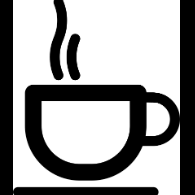
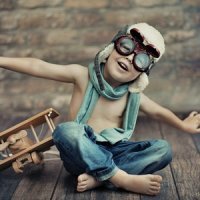
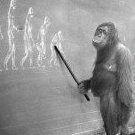

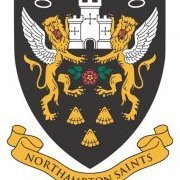
.thumb.jpg.3d6eff3e2f6cc042679bca864bcb2b1a.jpg)


